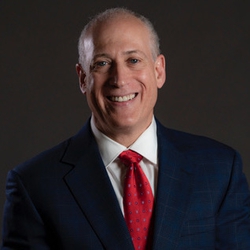You can be the best darn doctor in the world, but you will not be able to help anyone unless you run a profitable business. You see, if you go out of business, how can you help your patients?
So, even though you are in the business of helping others, you are actually in the business of running a business. The best way to be profitable is to collect every dollar that is owed to you.
Most doctors are very compassionate and they do not like to talk about money to the patients. That is fine, because that is not your job. That is the job of your financial team, which includes your front desk personnel.
The following are ways to make sure you collect all of your money.
- Verify and know your patients benefits prior to their arrival. This might require hiring another employee, or taking a present staff member to do the job part-time. You can hire a very smart high school or college student to the job as well. A form should be made where the staff member will just have to read off the list of questions he or she has to ask. These benefits are then put into the patient’s electronic chart.
- Upon arrival to the office, a member of the financial team will sit down with the patient to go over their benefits. This can be done in a private room or even in the treatment room. The key is total privacy.
- The patient will sign a financial form that shows that he or she understands the information that was given to them.
- You should have a fee schedule for your top insurance companies for your major procedures that you perform.
- The patient must be informed every time a procedure is about to be performed that is not covered by the patient’s insurance company. Once you get agreement that the patient will pay, the patient again must sign a form of understanding and agreement of payment at the time of service. These are the key words to say. “Mr. Jones, payment is due today.” Patients might agree on paying, but to them it means they can pay next time or in a payment plan. So you need to use the word today in your verbiage.
- Your front staff has to be trained in collecting all monies due at the time of service as well as any past balances. When interviewing for a front desk team member, have them go through a payment scenario. See how comfortable they are in collecting money. Some of them might feel very empathetic for the patient and will say something like, “well, it’s ok if you can’t pay today. We will just bill you.” Just bill you is the kiss of death for your practice. Once the patient leaves the office without paying, the chance they will pay as promised is not very good. Then your collection team will have to call, send statements, call again and send a few more statements. This leads to resentment and the patient now dislikes you and your practice. Happy patients are patients that pay at the time of service.
- Have every form of payment possible in your office. All major credit cards, even American Express. I rather lose a couple of percent from my charges then not collect at all. Take checks, and even post-dated checks. Just call the bank prior to depositing them. Also look into CareCredit. It is a medical credit card for the patient. The company pays you, and the patient pays CareCredit.
- A note about payment plans. Because of all the options in number seven above, there should be very few payment plans made. Again, this will give more work to your financial team. They will have to hunt the patients down if they don’t pay. If you have to make a payment plan, the first thing to ask is, “how long will it take for you to pay off your bill?” Do not ask, “how much money can you pay monthly?” If the patient owes $1,000 and they say they can pay $50 a month then it will take 20 months to pay off the bill. However when you ask how long will it take to pay off the bill, the chances are they won’t say 20 months, because even in their head it sounds ridiculous. The usual answer is about three to five months. So, if it is three months, they pay the first third today, then the second third next month, and the last third in two months. So, you are actually getting paid in two months by doing it this way.
Even in payment plans, get post-dated checks or have their credit card on file.Just make sure you call the patient prior to making the payment.
Remember, a viable practice will keep you, the staff, and even the patients happy.
Your practice is the most valuable investment you have or will ever make. It’s time for you to take action and find solutions to your problems. Join the Top Practices Practice Management Institute today to learn more about how you can collect all of the money owed to you to keep your practice thriving and successful.
